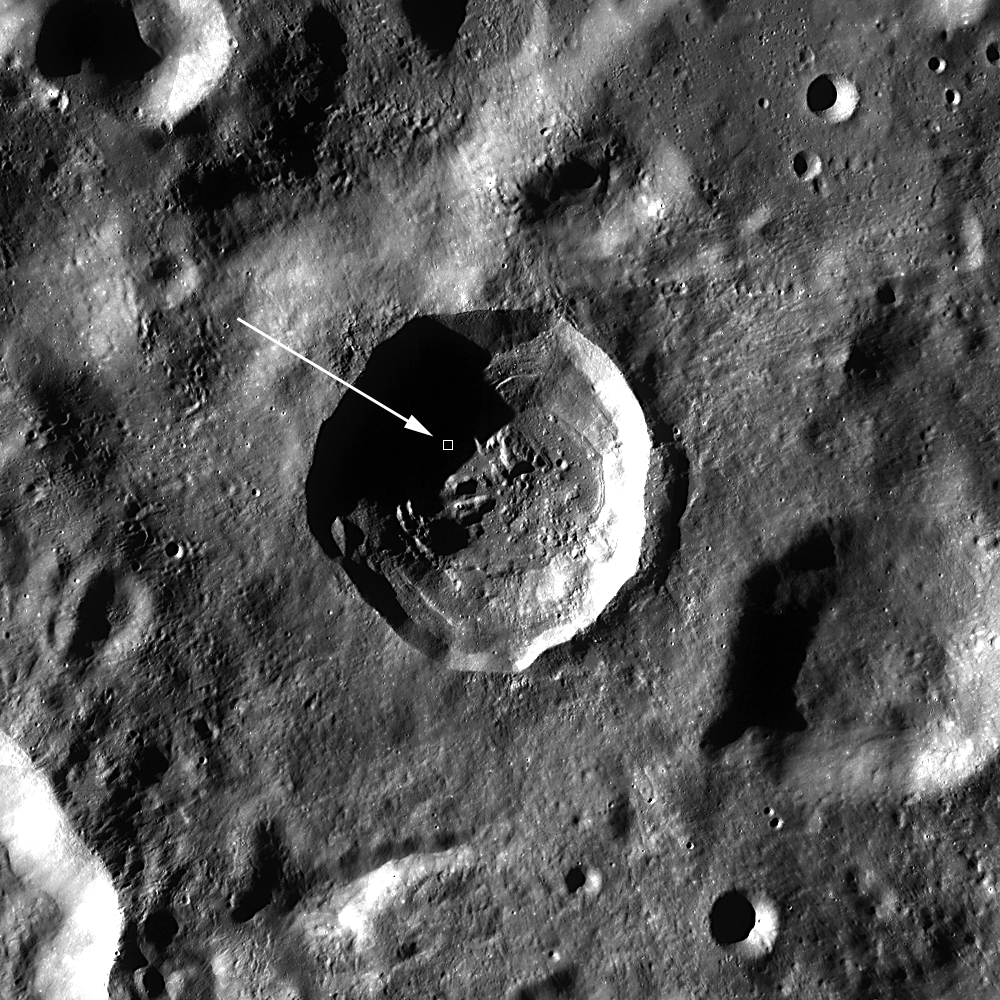
Das crater (35 km diameter) is located just northeast of the South Pole-Aitken Basin. The portion of the floor in the opening image is a smooth and flat pool of impact melt. A large amount of energy is created and absorbed by both the bolide and the target during an impact event. The bolide is very nearly vaporized, and a large portion of the target is melted, fractured, and redeposited elsewhere as ejecta. Impact melt, unlike most ejecta, stays primarily within its parent crater, forming intricate patterns as the melt flows downslope and gathers in large pools. Occasionally, impact melt will also spill out of the crater, forming exterior melt deposits.
But how do scientists know that this pond within Das crater is in fact impact melt? Solving this puzzle requires the geologic context of this small pond within the crater. As discussed in yesterday's Featured Image, the volume and texture of the pond help piece together the puzzle. Das' crater floor in the context image is not smooth or flat and is made up of several pools of ponded material. This is unlike Jenner's singular flat crater floor. The distribution of these ponded materials gives us our next clue! The ponds are at separate elevations within the crater and flow downslope! This is not what we expect to see in a mare flooded crater when a massive amount of lava is sourced from a low elevation. These observations all point to impact melt as the best explanation for this pooled material.
Look for more impact melt within the full LROC NAC frame!
Related Posts: King Crater's Unusual Melt Pond, Out of the Shadows Impact Melt Flow at Byrgius A Crater, Forked Impact Melt Flows at Farside Crater
Published by Drew Enns on 22 June 2011
